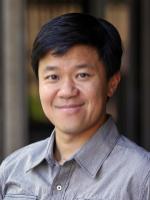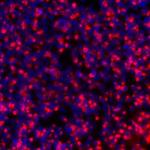
Hung Chang Yao, Ph.D.
Senior Investigator
Reproductive & Developmental Biology Laboratory / Reproductive Developmental Biology Group
NIEHS
Research Topics
Compelling animal evidence and human epidemiological data have revealed that impairment of organ development has profound consequences on adult health. The concept of "developmental origins of adult diseases" also applies to the reproductive systems where formation of most reproductive organs is completed before birth. Defects in reproductive organ formation are main causes of birth defects in reproductive organs. However, minor abnormalities are often left undetected and become a potential cause of fertility problems and neoplasia when the affected individual reaches adulthood.
The Reproductive Developmental Biology Group uses organogenesis of gonads, reproductive tracts, and external genitalia as a model to delineate the basic process of organ formation and the potential implication of the impacts of environment on reproductive organ formation and fertility in adulthood. Reproductive organs are one of the few organs that exhibit dramatic sex-specific pattern of development. This unique pattern of development provides a model to understand not only the mechanism of reproductive organ formation, but also how progenitor cells make the decision to differentiate into tissue-specific cell types, the fundamental concept of biology.
Major Areas of Research
- Understand how different somatic cell lineages (Sertoli and Leydig cells in the testis and granulose and theca cells in the ovary) are formed in the developing testis and ovary, respectively.
- Define the cellular processes that lead to dimorphic establishment of the reproductive tracts and external genitalia.
- Investigate the susceptibility of reproductive organs to harmful chemicals and maternal stress, and lingering impacts on fertility in adulthood.
Current Projects
- Define the linage progression roadmap of somatic cells in the gonads, reproductive tracts, and external genitalia by combined single cell mRNA and ATAC sequencing.
- Identify novel players in gonadal organogenesis using conditional genetic approaches, ChIP-seq, ATAC-seq, and RNA-seq.
- Uncover novel regulators (RUNX1, NR2F2, etc.) responsible for the establishment of dimorphic reproductive organs.
- Examine the impact of harmful chemicals and maternal stress on reproductive organ development and fertility.
Biography
Dr. Yao received his doctoral degree at the University of Illinois in Urbana-Champaign in 1999 and then completed his postdoctoral training at Duke University Medical Center in 2002. He became Assistant Professor in the Department of Comparative Biosciences at University of Illinois in Urbana-Champaign in 2003 and received tenure in 2009. Dr. Yao moved to NIEHS in 2010 and was promoted to Senior Investigator in 2018. Dr. Yao was the recipient of the Basal O'Connor Starter Research Award from March of Dimes Birth Defect Foundation, Pfizer Research Award, New Investigator Award, Research Award from the Society for the Study of Reproduction, Young Andrologist Award from the American Society of Andrology, NIEHS Director’s Merit Award, and NIH Director’s Award for exemplary scientific discovery and dedication to fellow mentoring. He was also elected as the Distinguished fellow by the Society for the Study of Reproduction.
Selected Publications
- Zhao F, Franco HL, Rodriguez KF, Brown PR, Tsai MJ, Tsai SY, Yao HH. Elimination of the male reproductive tract in the female embryo is promoted by COUP-TFII in mice. Science. 2017;357(6352):717-720.
- Rodriguez KF, Brown PR, Amato CM, Nicol B, Liu CF, Xu X, Yao HH. Somatic cell fate maintenance in mouse fetal testes via autocrine/paracrine action of AMH and activin B. Nat Commun. 2022;13(1):4130.
- Amato CM, Yao HH. Developmental and sexual dimorphic atlas of the prenatal mouse external genitalia at the single-cell level. Proc Natl Acad Sci U S A. 2021;118(25).
- Nicol B, Grimm SA, Chalmel F, Lecluze E, Pannetier M, Pailhoux E, Dupin-De-Beyssat E, Guiguen Y, Capel B, Yao HH. RUNX1 maintains the identity of the fetal ovary through an interplay with FOXL2. Nat Commun. 2019;10(1):5116.
- Liu C, Peng J, Matzuk MM, Yao HH. Lineage specification of ovarian theca cells requires multicellular interactions via oocyte and granulosa cells. Nat Commun. 2015;6:6934.
Related Scientific Focus Areas
This page was last updated on Tuesday, February 18, 2025



